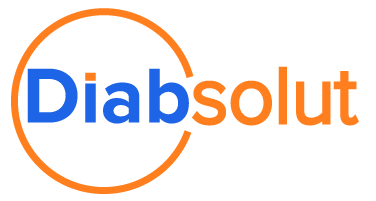The Role of Technology in Running an Efficient Customer Success Organization
Author: Essam Nessim

In today’s customer-centric business landscape, ensuring customers achieve success with your product or service is paramount. The growing focus on customer retention, loyalty, and advocacy has elevated customer success (CS) from a supporting role to a strategic business function. At the heart of this transformation lies technology, which empowers CS teams to deliver proactive, personalized, and scalable services.
Understanding the Evolving Role of Customer Success
CS was never about reactive problem-solving; it’s about proactive engagement. CS teams aim to ensure customers derive maximum value from their investments, leading to renewals, upsells, and advocacy. This requires a combination of data-driven insights, seamless communication, and well-orchestrated workflows—all of which technology enables.
Many CS organizations still rely on spreadsheets, homegrown applications, or basic CRM tools to manage their workflows. However, as customer expectations and business complexity increase, adopting the right technology becomes essential. No matter where your organization falls on the CS maturity spectrum, having the right tool is essential for running your business efficiently and effectively!
1. The Technology Stack for Customer Success
An efficient CS division leverages a diverse set of software tools tailored to their unique workflows. The key categories include:
- Customer Relationship Management (CRM)
CRMs like Salesforce provide a centralized platform for managing customer data, tracking interactions, and analyzing customer health. They act as the cornerstone of customer success operations, enabling a 360-degree view of each customer. - Customer Success Platforms (CSP)
Platforms like Certinia’s Customer Success Cloud (CS Cloud), and tools like Gainsight and Totango, specialize in tracking customer health scores, usage analytics, and engagement trends. These platforms and tools offer predictive insights and automation to help CS teams intervene before issues escalate. - Data Analytics Tools
Analytics tools, such as Salesforce CRM Analytics, Salesforce Tableau or Microsoft Power BI help CS teams visualize data and extract actionable insights. By identifying trends in customer behavior, teams can prioritize high-value accounts and optimize their strategies. - Communication and Collaboration Tools
Platforms like Slack, Microsoft Teams, and Zoom facilitate real-time communication and collaboration among CS teams, ensuring that customer concerns are addressed promptly and comprehensively. - Learning Management Systems (LMS)
To onboard and educate customers, tools like Docebo and Litmos deliver tailored training modules. These systems empower customers to become proficient users of the product, enhancing their overall experience.
2. Automation: The Backbone of Efficiency
Automation is pivotal in scaling customer success efforts. Key areas where automation enhances efficiency include:
- Onboarding Workflows: Automating onboarding ensures every customer receives consistent and comprehensive guidance.
- Health Score Monitoring: Automated health score calculations based on usage data, feedback, and engagement metrics enable proactive support.
- Renewal and Upsell Triggers: Automated reminders for renewals and upsell opportunities keep CS teams on track without manual intervention.
3. Proactive Engagement Through AI and Predictive Analytics
Artificial intelligence (AI) and predictive analytics are game-changers for customer success. By analyzing historical data, these tools forecast potential churn risks and upsell opportunities. AI-powered chatbots and virtual assistants further enhance customer engagement by addressing queries instantly and around the clock.
4. Enhancing Customer Experience with Personalization
Technology enables CS teams to deliver highly personalized experiences. Dynamic customer profiles allow teams to:
- Tailor communication based on customer preferences and behavior.
- Recommend features or upgrades aligned with specific needs.
- Create bespoke success plans for strategic accounts.
5. Measuring Success: KPIs and Reporting
An efficient customer success division must measure its impact. Technology provides real-time dashboards and detailed reports to track key performance indicators (KPIs), such as:
- Net Promoter Score (NPS): A measure of customer satisfaction and likelihood to recommend.
- Customer Churn Rate: The percentage of customers lost over a period.
- Expansion Revenue: Revenue generated from upsells and cross-sells.
- Customer Health Score: An aggregate metric based on usage, satisfaction, and engagement.
6. Overcoming Challenges with Technology
Despite its advantages, adopting technology in customer success comes with challenges, such as integrating disparate systems, ensuring data accuracy, and driving user adoption. Organizations can mitigate these challenges by:
- Investing in training for CS teams
- Involving CS leaders in tool selection
- Prioritizing platforms that integrate seamlessly with existing CRM systems
Looking Ahead: The Future of Customer Success Technology
The future of customer success technology is poised for even greater innovation. Advanced AI models will refine predictive analytics, enabling hyper-personalized customer interactions. Augmented reality (AR) and virtual reality (VR) could revolutionize training and onboarding experiences. Moreover, tighter integrations across tools will streamline workflows and enhance efficiency.
According to a recent TSIA Research Report, 40% of survey respondents reported deploying AI applications within their CS organizations in 2024. TSIA predicts this figure will surpass 50% by 2025.
Conclusion
Technology and software tools are indispensable for running an efficient customer success division. They empower teams to work smarter, not harder, by automating repetitive tasks, providing actionable insights, and enabling personalized customer interactions.
As businesses continue to prioritize customer-centric strategies, investing in the right technology stack will be crucial for staying competitive and delivering exceptional value to customers. If your organization is looking to optimize its customer success efforts, consider evaluating your current technology stack and identifying areas for improvement. Need guidance? Reach out to our team of experts to explore the best solutions for your business.
Search
Trending Topics
- Modernizing Government Utility Operations with Salesforce Field Service
- PSA vs Project Management Tools: Understanding the Key Differences
- The Role of Technology in Running an Efficient Customer Success Organization
- Maximizing Efficiency with Certinia Services Estimator: Unifying Software and Services Estimates for Enterprises
- How AMS Transforms PSA Break-Fix Management for Faster Resolutions
- How to Build Enhancements in Certinia PSA Without Overburdening Your Team
- Optimizing Certinia PSA: Addressing Backlogs, Enhancements, and Common Challenges
- Why Regular Health Checks Are Critical for Long-Term Success in Field Service Technology
- Professional Services Challenges in Today’s Business Landscape
- How Managed Services Drive Success – The Diabsolut Advantage
